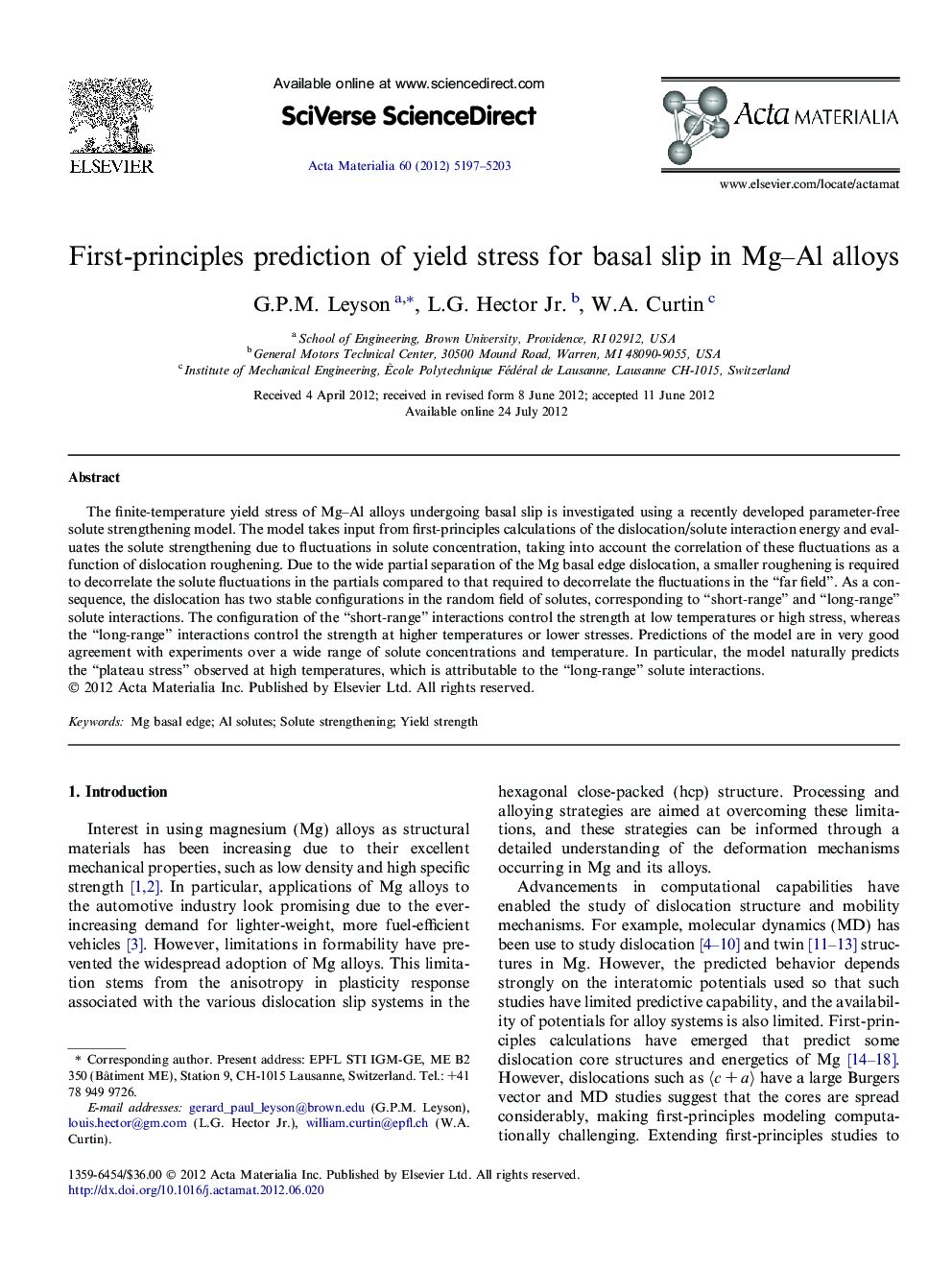| Article ID | Journal | Published Year | Pages | File Type |
|---|---|---|---|---|
| 1446782 | Acta Materialia | 2012 | 7 Pages |
The finite-temperature yield stress of Mg–Al alloys undergoing basal slip is investigated using a recently developed parameter-free solute strengthening model. The model takes input from first-principles calculations of the dislocation/solute interaction energy and evaluates the solute strengthening due to fluctuations in solute concentration, taking into account the correlation of these fluctuations as a function of dislocation roughening. Due to the wide partial separation of the Mg basal edge dislocation, a smaller roughening is required to decorrelate the solute fluctuations in the partials compared to that required to decorrelate the fluctuations in the “far field”. As a consequence, the dislocation has two stable configurations in the random field of solutes, corresponding to “short-range” and “long-range” solute interactions. The configuration of the “short-range” interactions control the strength at low temperatures or high stress, whereas the “long-range” interactions control the strength at higher temperatures or lower stresses. Predictions of the model are in very good agreement with experiments over a wide range of solute concentrations and temperature. In particular, the model naturally predicts the “plateau stress” observed at high temperatures, which is attributable to the “long-range” solute interactions.
